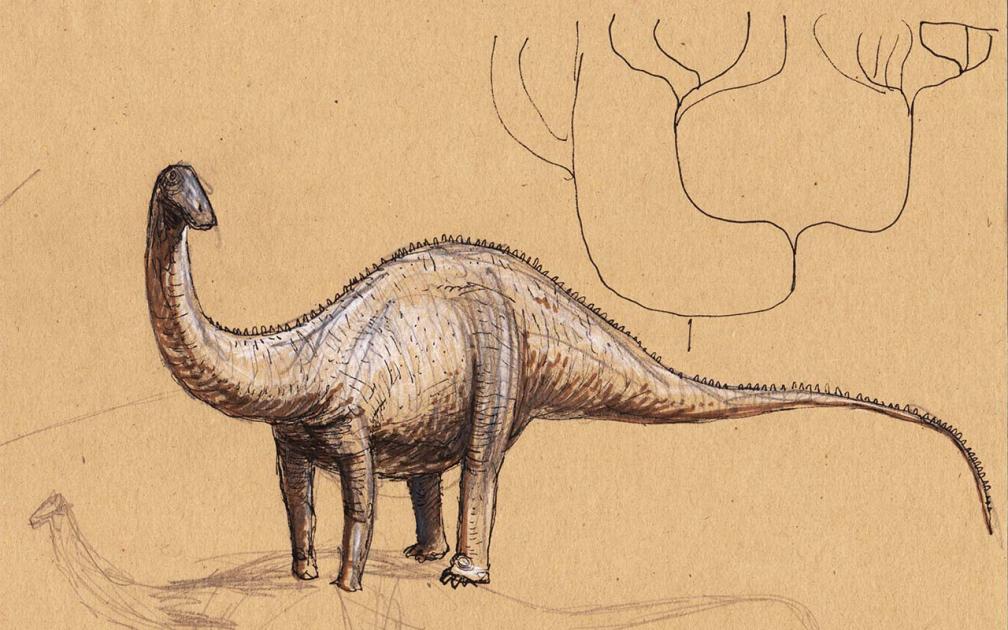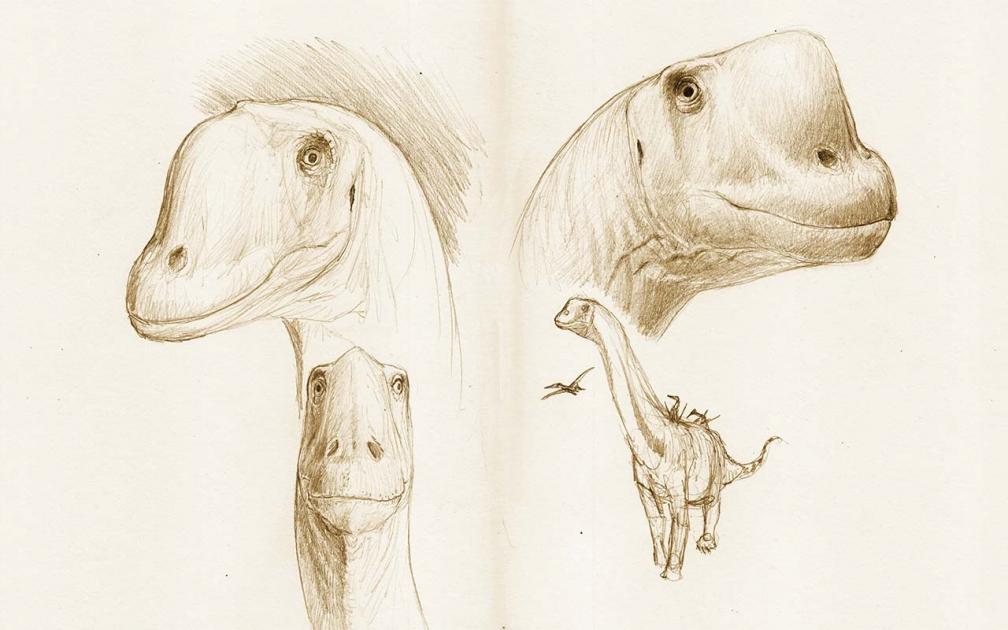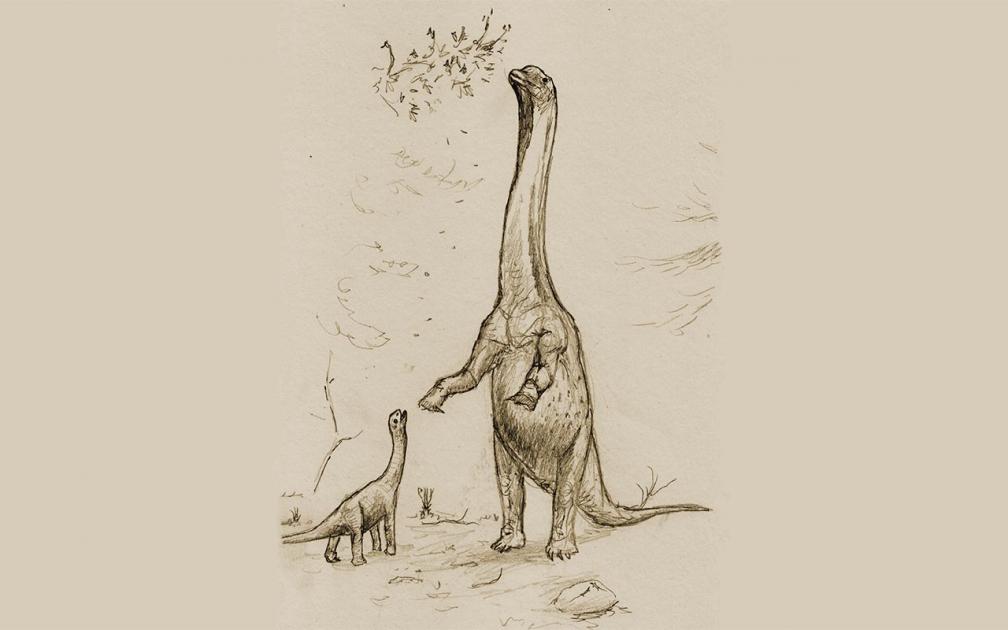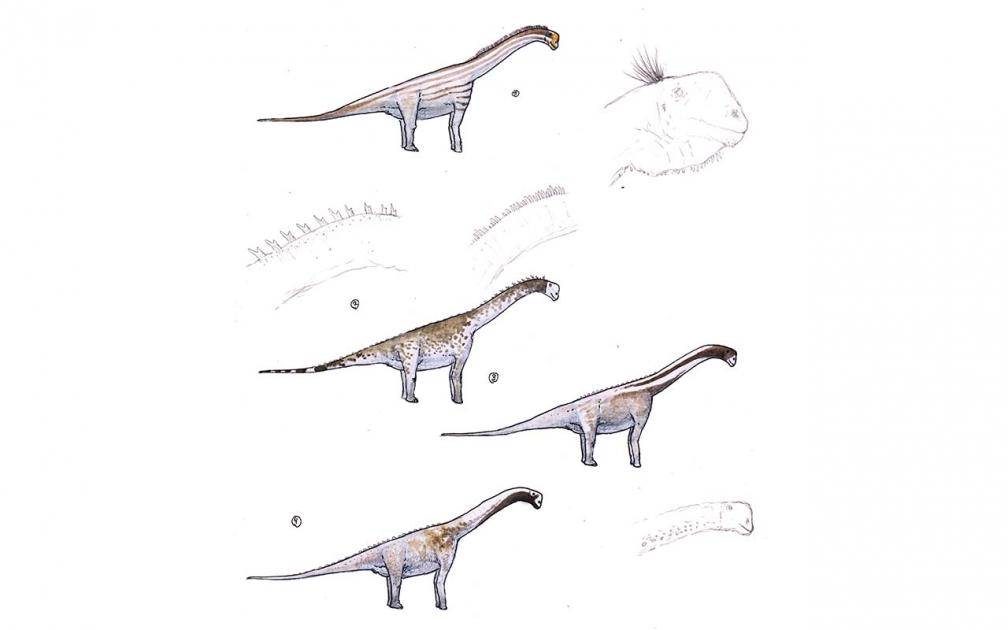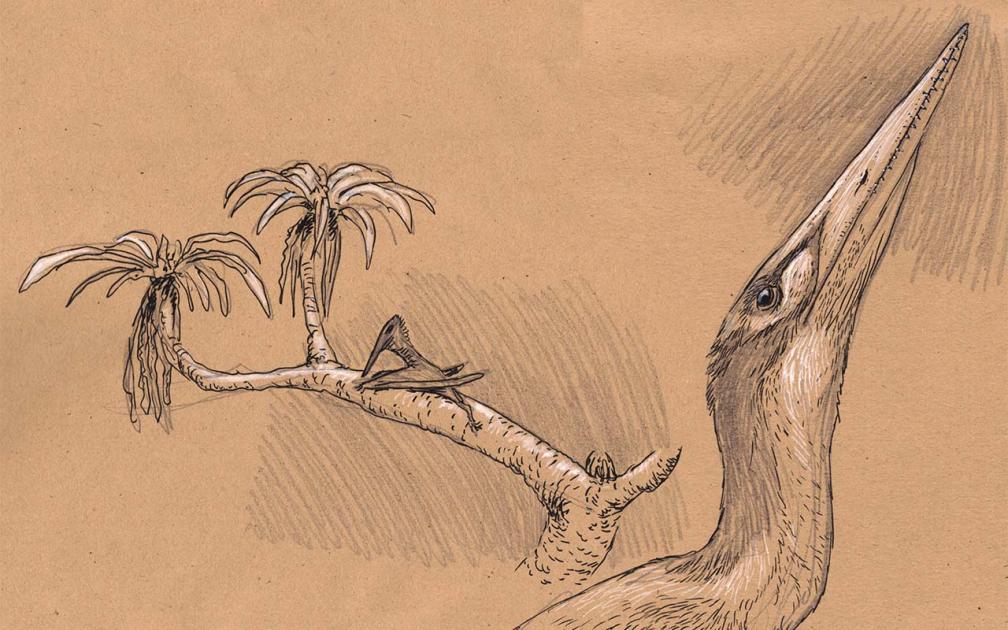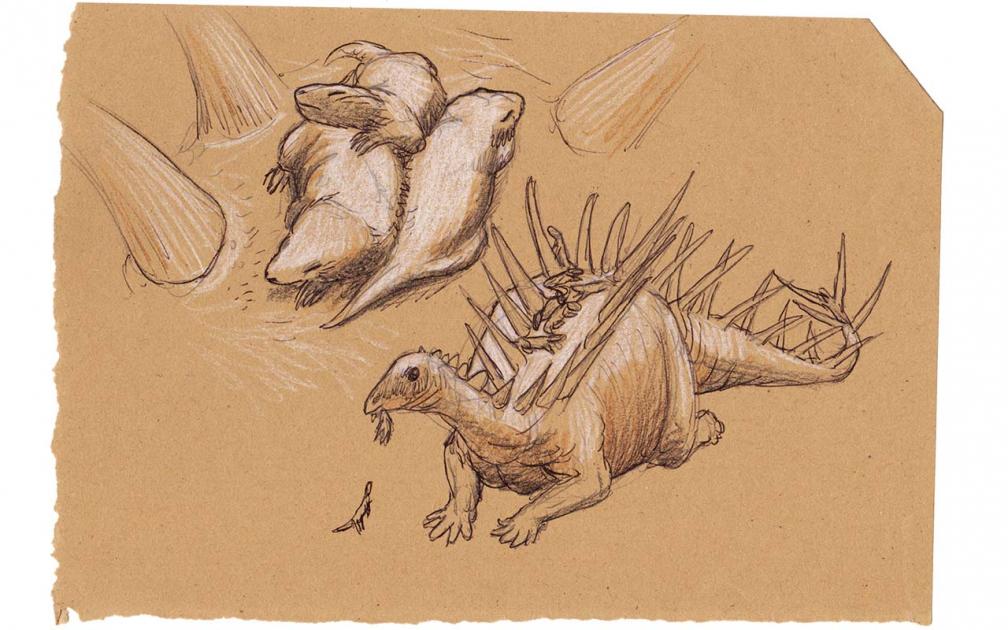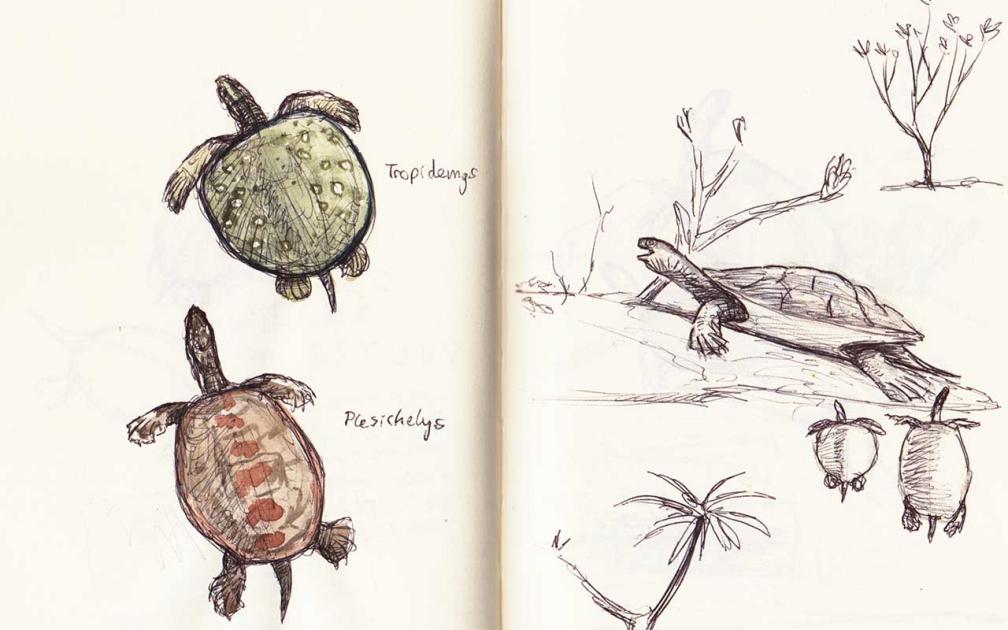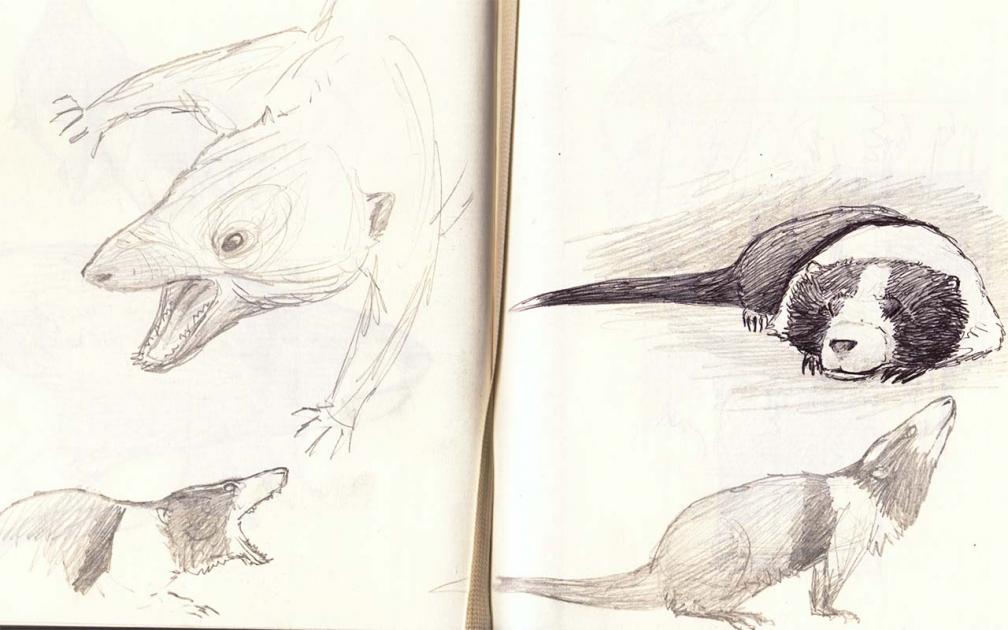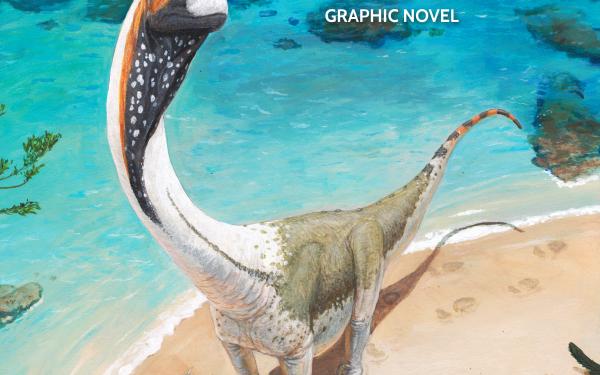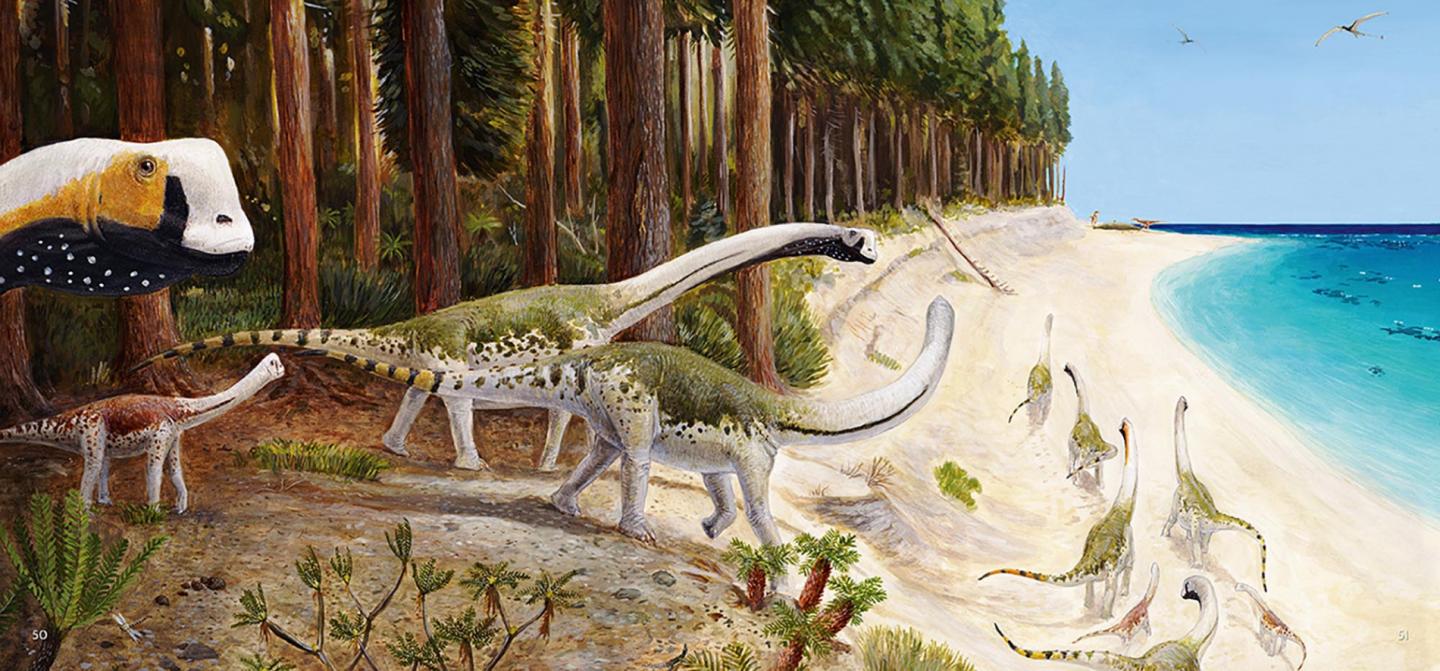
Joschua Knüppe
Dinosaur fate as science communication
A paleontological graphic novel brings a herd of Europasaurus dinosaurs and their ecosystem back to life – based on the fossil finds near Goslar.
Dinosaurs are a stroke of luck for paleontology – and probably for science as a whole. For almost two centuries, first as an artistic motif and later as pop culture, they have been a source of fascination fueled by ever new discoveries and ever more precise depictions. Dinosaurs are an anchor of the natural sciences in the minds of all age groups, firing the imagination and arousing curiosity and interest in research.
154 million years... An unimaginable length of time. How different our world may have looked so long ago [...]
Geologist and paleontologist Dr. Oliver Wings knows that they are not just yesterday's news: "By studying our planet's past, we are able to make predictions about how things will develop in the future. In his book "Europasaurus: Life on Jurassic Islands", which he developed together with the artist Joschua Knüppe, he draws attention particularly to the facet of coexistence in ecosystems. The bilingual, German-English volume, the development of which was funded by the Volkswagen Foundation as an exemplary science communication project, bears the addition "Graphic Novel" on the cover.
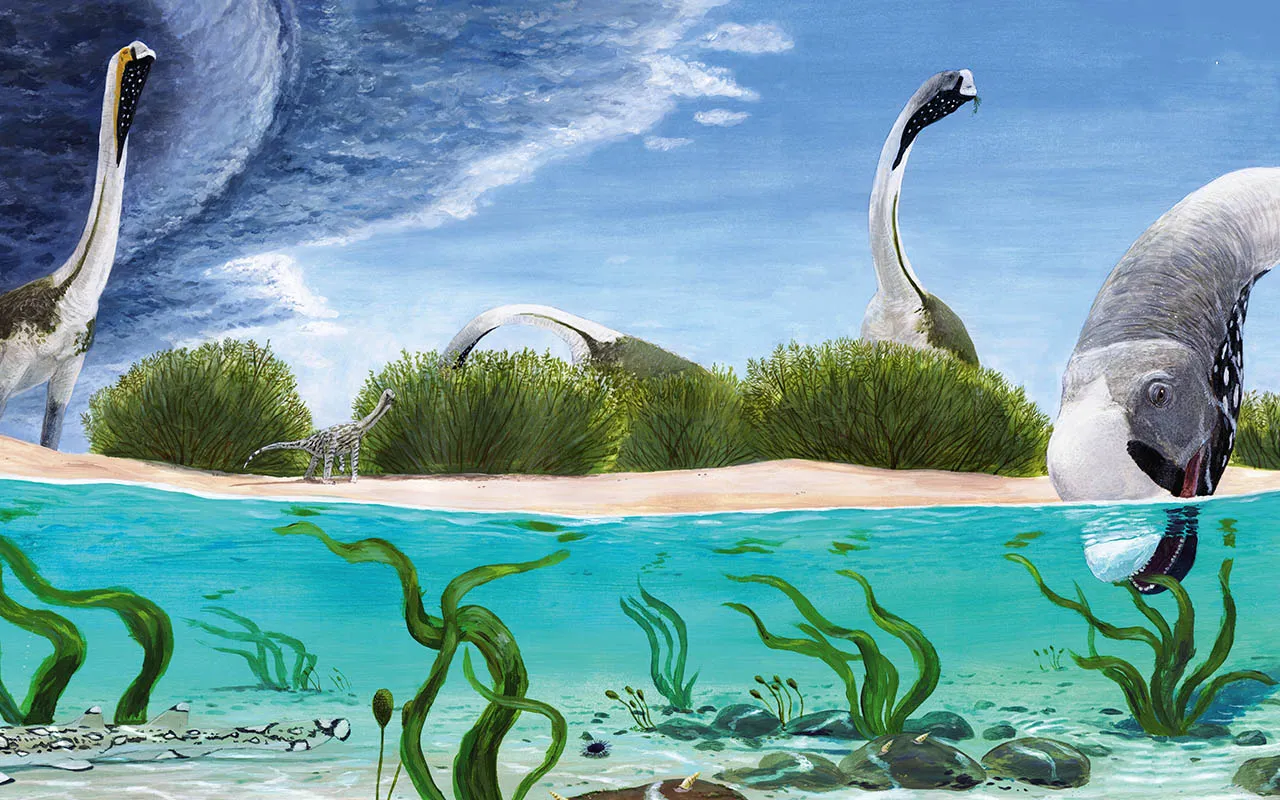
A picture book, then, one in which the text initially recedes into the background. "154 million years... An unimaginable length of time. How different our world may have looked so long ago [...]", the preface sets the mood for a story about dwarfed "giant" dinosaurs that once lived on an island in what is now the Harz region in Germany – a story that summarizes everything researchers have so far found out about the Europasaurus dinosaurs, their contemporaries and their environment.
However, the scientist and the artist are not so interested in scientific illustrations, but more in bringing their objects of research to life: How did the animals move? What was it like living in their environment? Who ate whom? The scientific quality reflected in the illustrations is high, but at a certain point imagination and cautious speculation must inevitably complement the findings from the fossil evidence. It can be reconstructed where muscles attached to bones. But did the creatures have scales or feathers? What colors were predominant? Every visualization – as with all reconstructions of extinct species – involves some degree of interpretation.
From the sketchbook of paleo-artist Joschua Knüppe
It is certain that the Europasaurus lived on an island in a shallow sea, with little food and few enemies – and over generations probably became smaller as a result. It is also certain that along with its remains, numerous fossils of other species and genera were found in a quarry near Goslar. Knüppe illustrates all these animals at the front and back of the book, on the double pages of the flyleaf, as a kind of drawn personal directory of the story told. In shades of grey and brown, they are rather sketchy and yet precisely depicted – and inspire visual worlds in the reader’s mind. A scale grid makes the proportions clear.
Inside the book, paintings replace the clearly outlined drawings and exploit the sensual possibilities of this genre. Knüppe has created a colorful world of its own with pigment and acrylic paints. The large-format pictures on double pages work almost for themselves, with small sequences emerging as sidelines or detailed glimpses.
The short texts remain descriptive, as if a Bernhard Grzimek animal film had strayed into a long-gone age of the earth: "Flocks of migrating pterosaurs herald the new day", for example, is written over a twilight picture to lend atmosphere. The story cleverly develops its pull, steadily getting closer to its protagonists, moving from one animal to the next with small internal plots, until it finally reaches the Europasaurus. Wings ventures an explanation for the discovery of the remains of more than 20 animals at a single location in the Langenberg Quarry by having lightning strike the shallow water where the herd stands – and then sends a surviving young animal in search of conspecifics in a kind of road movie through its ecosystem. In passing, the reader, too, comes across predatory dinosaurs, scavengers, land crocodiles, lizards or insects – and in each case accompanies them briefly on food-chain excursions.
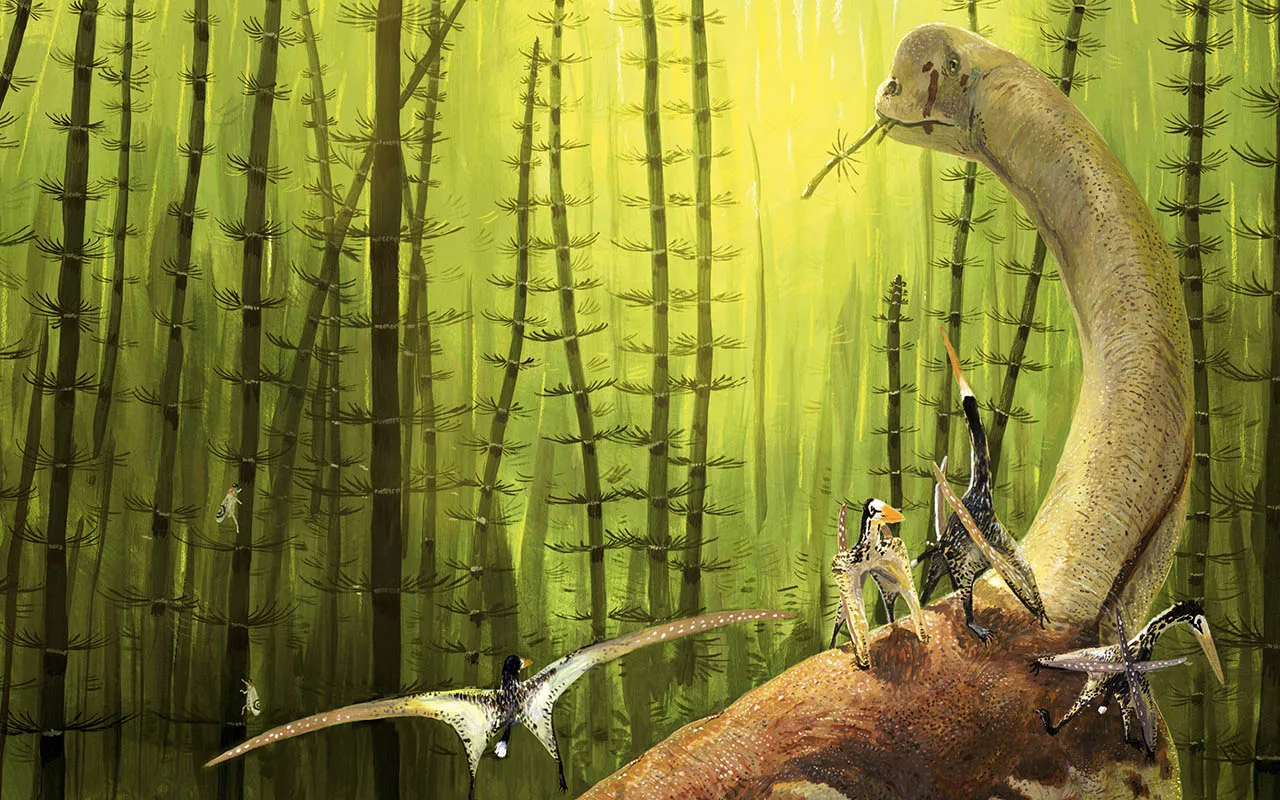
The diversity of fauna and flora and detailed information on the ecosystem can be found again in an extensive factual section that provides the scientific evidence for all the scenes depicted in the book: What was found, what can be read from it, what did the habitat look like in concrete terms, at which points does one have to abstract or interpret? It is a fascinating and instructive insight into paleontology and its reconstruction attempts with which the book concludes – one that makes you want to visit a museum. So, it doesn't matter too much that some might have expected more narrative from a graphic novel.
The book "Europasaurus" can be seen as a hybrid between picture book, exhibition, dino park, wide-screen action, animal film and popular textbook. The fact that it fits between two book covers is remarkable, for all these formats can be easily tucked under the arm, shown to friends, taken to the sofa to browse, and compared with other dinosaur representations or scientific material – whether by children or adults. This sets a weighty dinosaur anchor in everyday life, while the research ship sets off on an almost infinitely long chain to ever new voyages of discovery through the depths of time.

